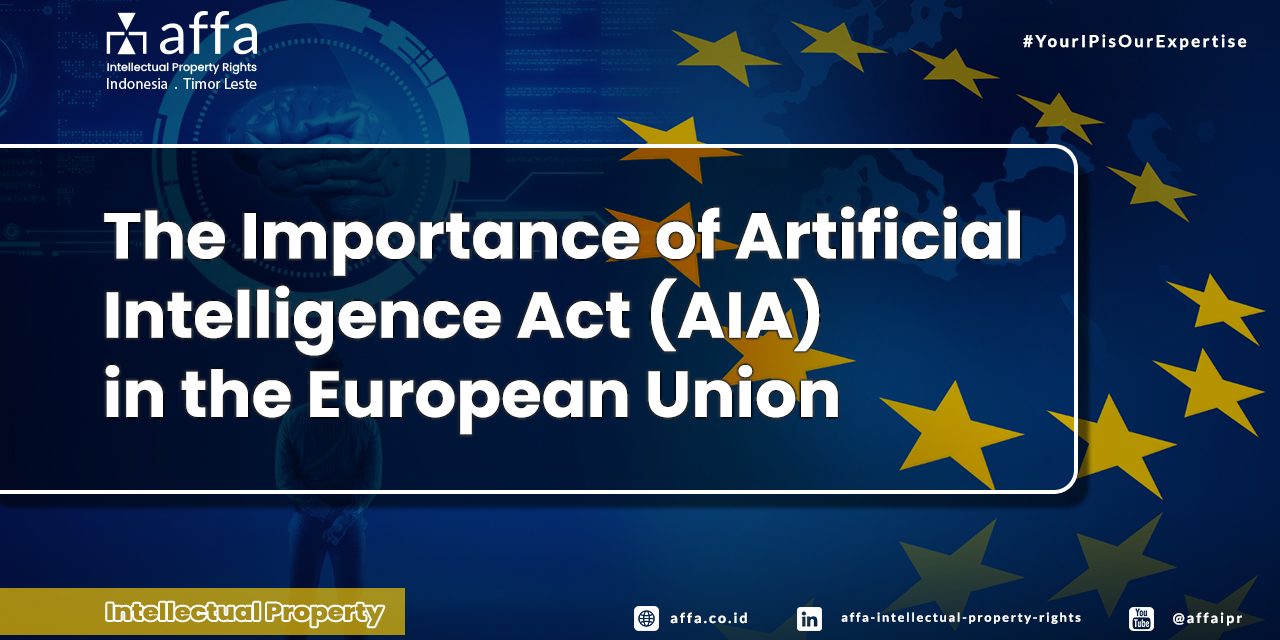The Importance of Artificial Intelligence Act (AIA) in the European Union
In the previous article, we discussed how AI could violate Intellectual Property, and several countries have prepared regulations to deal with it. This article will discuss the importance of AIA in the European Union for fighting the Infringement of Intellectual Property based on AI.
The European Parliament and the Council of the European Union, the EU’s legislative bodies, were negotiating the law’s final text. The aim was to agree on the AIA by the end of 2023.
AIA is very relevant for Intellectual Property infringement in many ways:
1. The AIA requires AI providers to be transparent about how their systems work.
This could make it easier for IP owners to identify and track down AI systems that are infringing on their rights. For example, if an AI system is used to create counterfeit goods, the AIA could require the provider of the AI system to disclose information about the training data that was used to create the system. This information could then be used by IP owners to identify the source of the counterfeit goods.
2. The AIA requires AI providers to take steps to mitigate the risk of IP infringement.
This could include measures such as using watermarks or other techniques to protect IP-protected content from being used by AI systems without permission. For example, an AI system that is used to create images could be programmed to detect and remove watermarks.
3. The AIA provides enforcement mechanisms against AI providers that infringe IP rights.
This could include fines, injunctions, and other measures. For example, if an AI provider is found to be infringing IP rights, the AIA could allow the IP owner to seek an injunction to prevent the provider from continuing to use the AI system.
Overall, the AIA is a significant step forward in the fight against IP infringement using AI. By requiring AI providers to be transparent, to take steps to mitigate the risk of IP infringement, and to comply with enforcement mechanisms, the AIA could help to protect IP rights in the EU.
Here are some specific examples of how the AIA could be used to address IP infringement:
- An AI system that is used to create images could be programmed to detect and remove watermarks. This would make it more difficult for counterfeiters to use the AI system to create fake images.
- An AI system that is used to translate text could be programmed to identify and remove copyrighted content. This would make it more difficult for people to use the AI system to infringe copyright by translating copyrighted works without permission.
- An AI system that is used to generate music could be programmed to identify and remove copyrighted melodies. This would make it more difficult for people to use the AI system to infringe copyright by generating music that sounds similar to copyrighted works.
The AIA is still in the early stages of development, but it has the potential to be a powerful tool for protecting IP rights in the EU. As the AIA is finalized and implemented, it will be interesting to see how it is used to address IP infringement in a variety of contexts.
If you need further information regarding the registration and protection of Intellectual Property in Indonesia and abroad, don’t hesitate to contact us via [email protected].
Sources:







